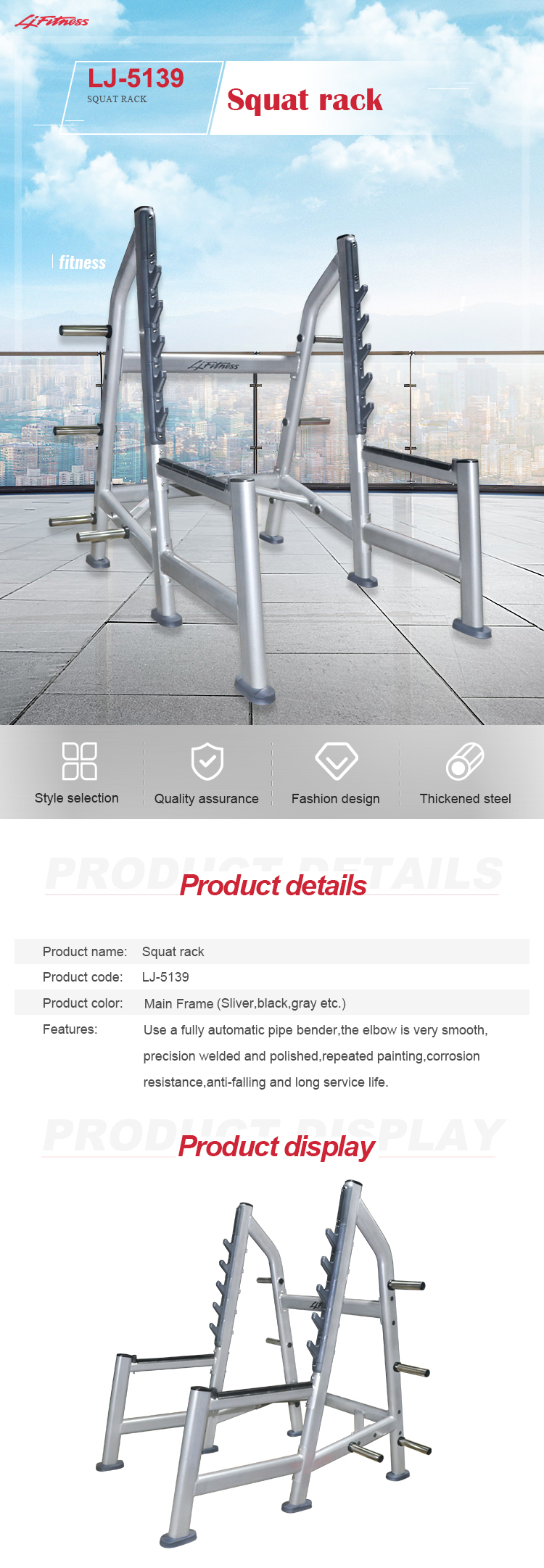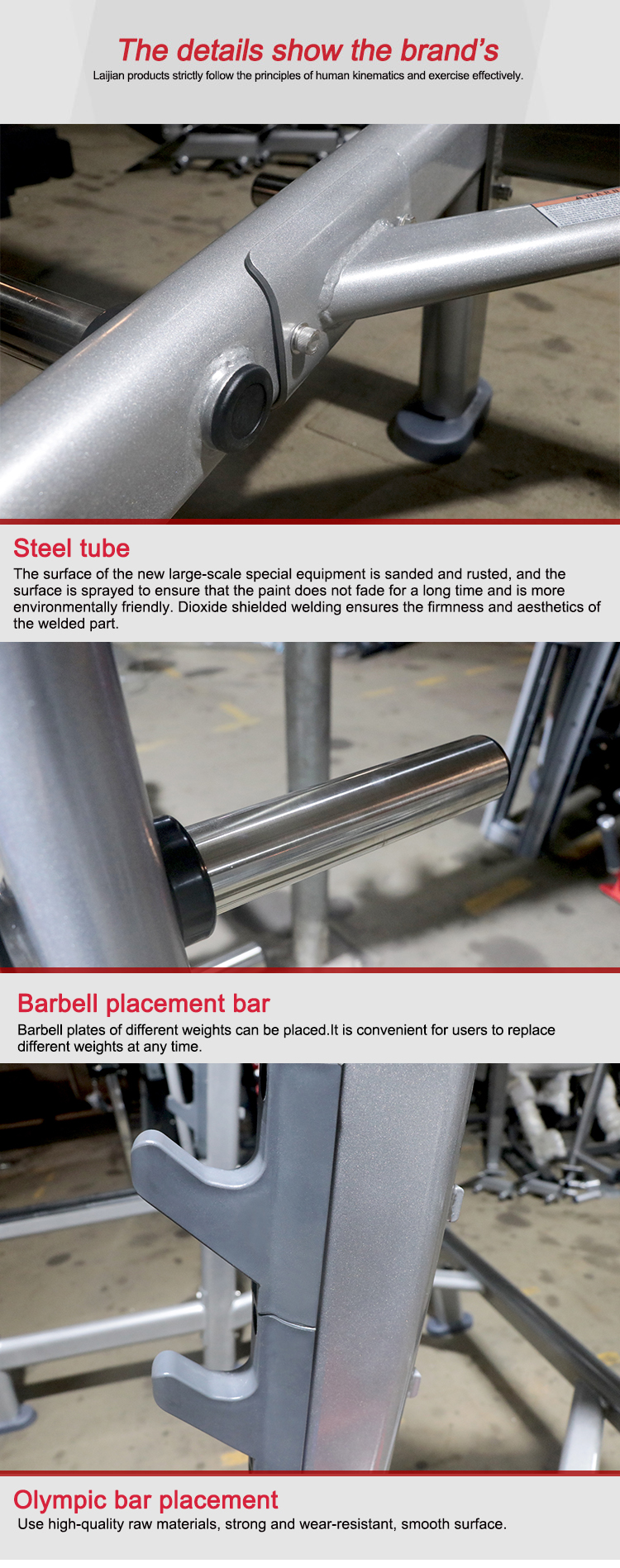In summary, the depth of a squat rack you need is largely determined by your height and the exercises you plan to perform. Most standard squat racks provide ample space for basic exercises, while taller or more specialized racks might be necessary for advanced or specific training needs. Always prioritize safety and stability when selecting your equipment.Is it better to squat on a plate? The choice of using a weight plate versus a barbell for squats largely depends on personal preference, the type of workout you're doing, and your specific goals.
Using a weight plate for squats can be beneficial in several ways:
1. **Flexibility**: You have more flexibility in terms of the amount of weight you can add. Weight plates come in various sizes and weights, allowing you to adjust the load precisely according to your strength level or the exercise's demands.
2. **Safety**: If you're just starting out or are working with lighter weights, using plates might feel safer because they are typically lighter than barbells and easier to manage.
3. **Space Efficiency**: Plates take up less space when not in use compared to a full-sized barbell. This is particularly useful if you have limited storage space at home.
4. **Variety of Exercises**: Plates allow for a variety of exercises beyond squats, such as dumbbell rows, lateral raises, etc., which might not be as easy to perform with a barbell.
On the other hand, barbells offer some advantages:
1. **Stability**: Barbells provide a more stable platform, which can be crucial for heavier lifts where stability is important to prevent injuries.
2. **Grip Strength**: Using a barbell regularly can help build grip strength, which is beneficial for many other exercises and activities.
3. **Learning Fundamental Lifts**: Many people find that learning to squat with a barbell first (once they've mastered the basics) helps them develop a strong foundation in lifting mechanics.
4. **Community Standards**: In a gym setting, most people will use barbells for squats, so being familiar with this equipment can make it easier to follow along with group classes or workout routines.
Ultimately, the decision comes down to what you feel comfortable with, what your fitness goals are, and what resources you have available. If you're new to weightlifting, starting with a barbell under the guidance of a trainer could be beneficial to learn proper form and technique. As you progress, you might find that incorporating both plates and barbells into your routine can provide a well-rounded training experience.What if l don't have a squat rack? If you don't have access to a squat rack, there are still plenty of ways to perform squats and other related exercises without one. Here are some alternatives:
1. **Bodyweight Squats**: The most basic form of squats can be done without any equipment. Stand with your feet shoulder-width apart, engage your core, and lower your hips as if sitting in an imaginary chair. Make sure your knees track over your toes and keep your chest lifted. Repeat for desired reps.
2. **Bench or Chair Squats**: Find a sturdy bench, chair, or box. Place your hands on the bench behind you, step back, and lower your hips as far as you can while keeping your back straight. Push back up to the starting position. This variation targets the same muscles but might feel slightly different due to the lack of a rack.
3. **Dumbbell or Kettlebell Squats**: Use dumbbells or kettlebells to add resistance. Hold them at your sides or overhead, then perform squats as normal. This will help build strength and balance.
4. **Wall Squats**: Stand facing a wall with your feet shoulder-width apart. Lean against the wall and lower yourself into a squat position, keeping your back against the wall. Your thighs should be parallel to the ground. Hold this position for as long as you can or for a set number of reps.
5. **Barbell Squats (with alternative setup)**: If you have a barbell and no squat rack, you can perform back squats by setting up two bench weights or other heavy objects at about knee height on either side of you. These will act as "stabilizers" for the barbell. Make sure they're secure and won't tip over. Perform the squat as usual, using the barbell as you would in a rack squat.
6. **Box Squats**: Use a sturdy box or bench placed behind you. As you lower into the squat, your butt should touch the box, then push through your heels to stand back up. This helps improve your form and can be a good stepping stone before using a rack.
7. **Jump Squats**: These are explosive squats that can help improve power and leg strength. Perform a regular squat, but instead of standing back up, jump explosively off the floor and land softly back in the squat position. Repeat for reps.
Remember, the key to performing squats safely and effectively is maintaining proper form. Always ensure you're using appropriate weight (if applicable) and focus on your technique over the amount of weight lifted. If you're unsure about any exercise, consider watching online tutorials or consulting with a personal trainer.How much should i be able to squat rack? The amount you should be able to squat is highly dependent on your current fitness level, strength training experience, and individual anatomy. It's important to progress gradually and safely when increasing your weight lifted.
A common starting point for beginners in weightlifting might be around 50% of your bodyweight for the barbell squat. For example, if you weigh 150 pounds (70 kg), you might start with around 75-80 pounds (34-36 kg) for a few repetitions.
However, this is just a rough guideline. Here are some steps you can follow to determine how much you should be able to squat:
1. **Assess Your Fitness Level**: Understand where you stand in terms of strength and fitness. If you're new to weightlifting, consider starting with bodyweight exercises or lighter weights before moving to barbell squats.
2. **Consult a Professional**: A personal trainer or a strength coach can assess your form, mobility, and overall fitness to provide personalized recommendations. They can also help you develop a safe and effective training program.
3. **Progress Gradually**: Increase the weight slowly as you get stronger. This helps prevent injuries and ensures that your muscles adapt appropriately to the demands placed upon them.
4. **Focus on Form**: Prioritize proper technique over lifting heavier weights. Good form is crucial for safety and effectiveness. Use a mirror, ask a spotter, or consult video analysis to ensure you're performing squats correctly.
5. **Listen to Your Body**: Pay attention to any pain or discomfort. Squatting should not cause significant pain unless it's related to poor form or an underlying issue. Adjust your workouts accordingly.
Remember, the goal is not only to lift heavy but also to do so safely and effectively. Building a strong foundation through progressive overload, proper technique, and gradual increases in weight will lead to sustainable strength gains.What is the best form for a squat rack? The "best" form for using a squat rack can vary depending on your individual fitness level, experience with weightlifting, and personal goals. However, here are some general guidelines to follow when performing squats in a squat rack:
1. **Set up**: Place the barbell in the squat rack at the appropriate height (typically shoulder-width) so that you can grab it easily without having to lift it too high above your head. Adjust the safety pins if your gym has them installed, ensuring they are set at a height that allows you to safely perform the squat without hitting your neck or head.
2. **Stance**: Stand with your feet slightly wider than hip-width apart, toes pointing slightly outward (around 30-45 degrees). This helps distribute your weight evenly and provides stability during the movement.
3. **Grip**: Hold the barbell with an overhand grip (palms facing away from you), keeping your hands slightly wider than shoulder-width apart. This grip position helps engage the muscles of your back and shoulders.
4. **Start position**: Begin with the barbell resting on your upper back (or mid-back if you're more advanced), and your arms straight. Keep your chest up, shoulders back, and core engaged to maintain proper posture.
5. **Squat**: Lower your body by bending your knees and hips simultaneously, as if sitting down into a chair. Keep your weight on your heels, and ensure your knees track directly over your ankles. Your elbows should remain close to your sides, and your back should stay straight throughout the movement.
6. **Bottom position**: When your thighs are parallel to the ground, pause briefly to ensure you've reached the bottom position correctly.
7. **Stand up**: Push through your heels to return to the starting position, engaging your glutes and quads to drive yourself up. Keep your torso upright and avoid leaning forward or backward.
8. **Barbell placement**: If you're using a power rack with a spotter, ensure your spotters are standing behind you, ready to catch the bar if needed. They should be positioned to provide support while maintaining a safe distance from the bar.
9. **Safety**: Always use proper technique and consider having a spotter, especially when lifting heavy weights. A spotter's role is to ensure you have a safe exit from the movement, should you lose control of the bar.
Remember, it's crucial to learn proper squat form under the guidance of a qualified trainer if you're new to weightlifting. This will help prevent injuries and maximize the benefits of your workouts. As you gain experience and strength, you may adjust your form based on your specific needs and preferences.





